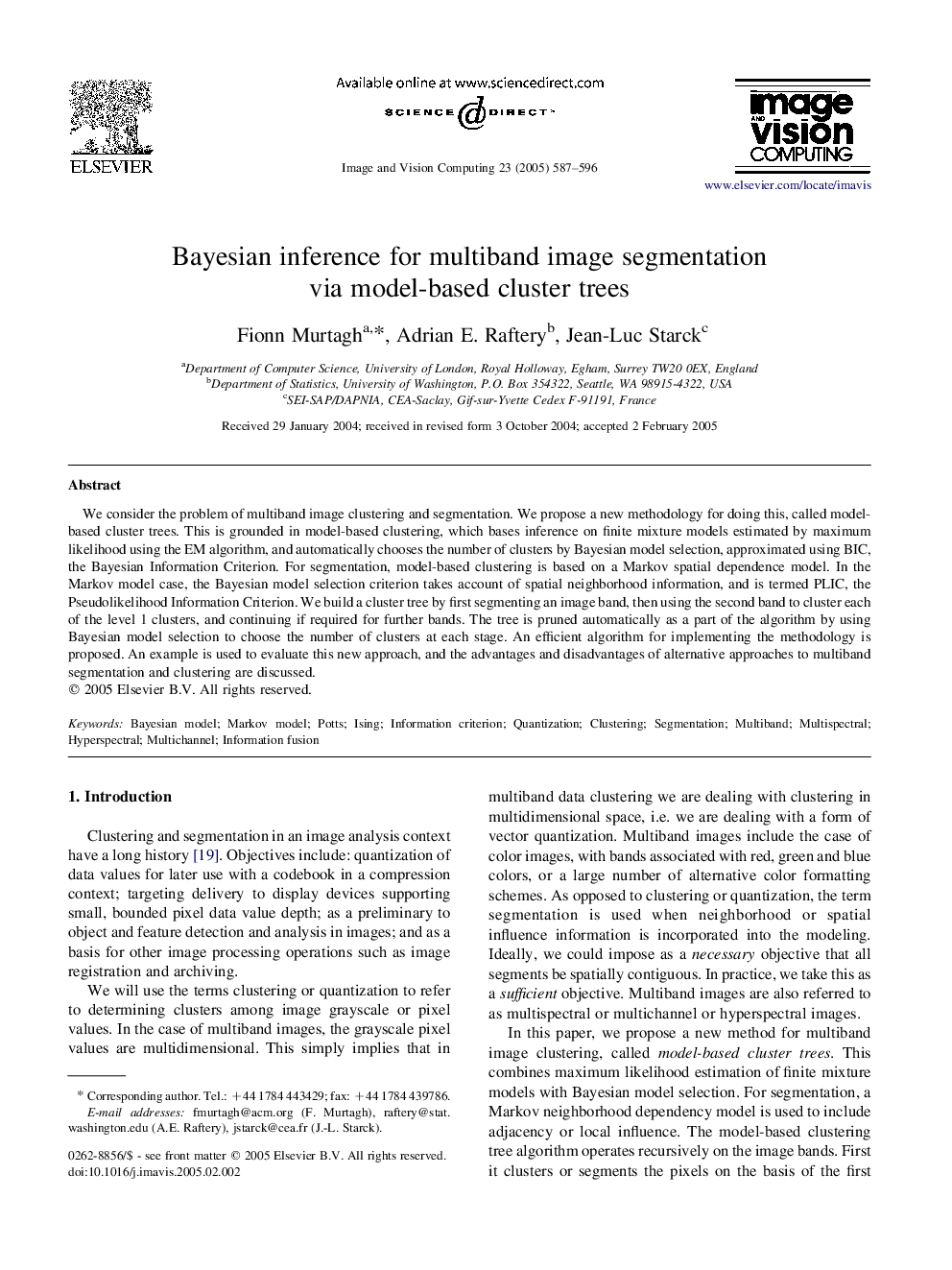| Article ID | Journal | Published Year | Pages | File Type |
|---|---|---|---|---|
| 10360229 | Image and Vision Computing | 2005 | 10 Pages |
Abstract
We consider the problem of multiband image clustering and segmentation. We propose a new methodology for doing this, called model-based cluster trees. This is grounded in model-based clustering, which bases inference on finite mixture models estimated by maximum likelihood using the EM algorithm, and automatically chooses the number of clusters by Bayesian model selection, approximated using BIC, the Bayesian Information Criterion. For segmentation, model-based clustering is based on a Markov spatial dependence model. In the Markov model case, the Bayesian model selection criterion takes account of spatial neighborhood information, and is termed PLIC, the Pseudolikelihood Information Criterion. We build a cluster tree by first segmenting an image band, then using the second band to cluster each of the level 1 clusters, and continuing if required for further bands. The tree is pruned automatically as a part of the algorithm by using Bayesian model selection to choose the number of clusters at each stage. An efficient algorithm for implementing the methodology is proposed. An example is used to evaluate this new approach, and the advantages and disadvantages of alternative approaches to multiband segmentation and clustering are discussed.
Keywords
Related Topics
Physical Sciences and Engineering
Computer Science
Computer Vision and Pattern Recognition
Authors
Fionn Murtagh, Adrian E. Raftery, Jean-Luc Starck,
